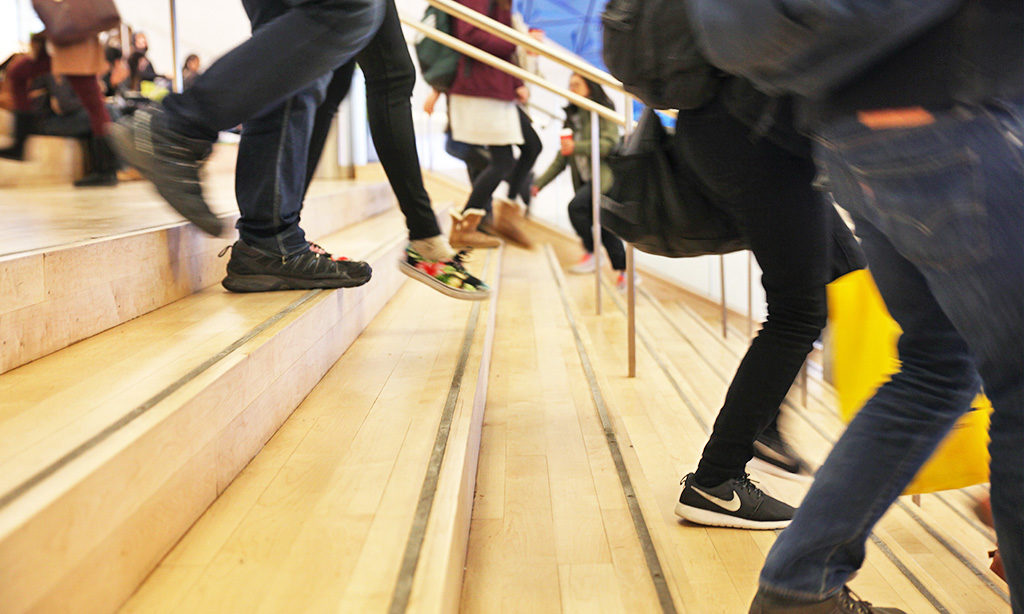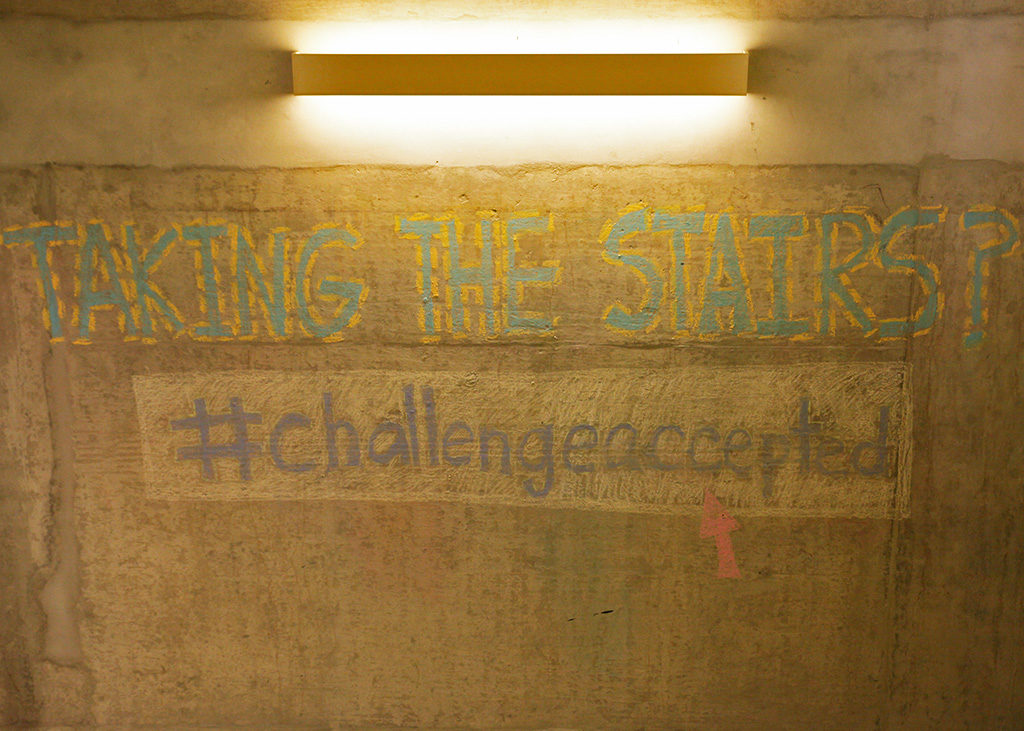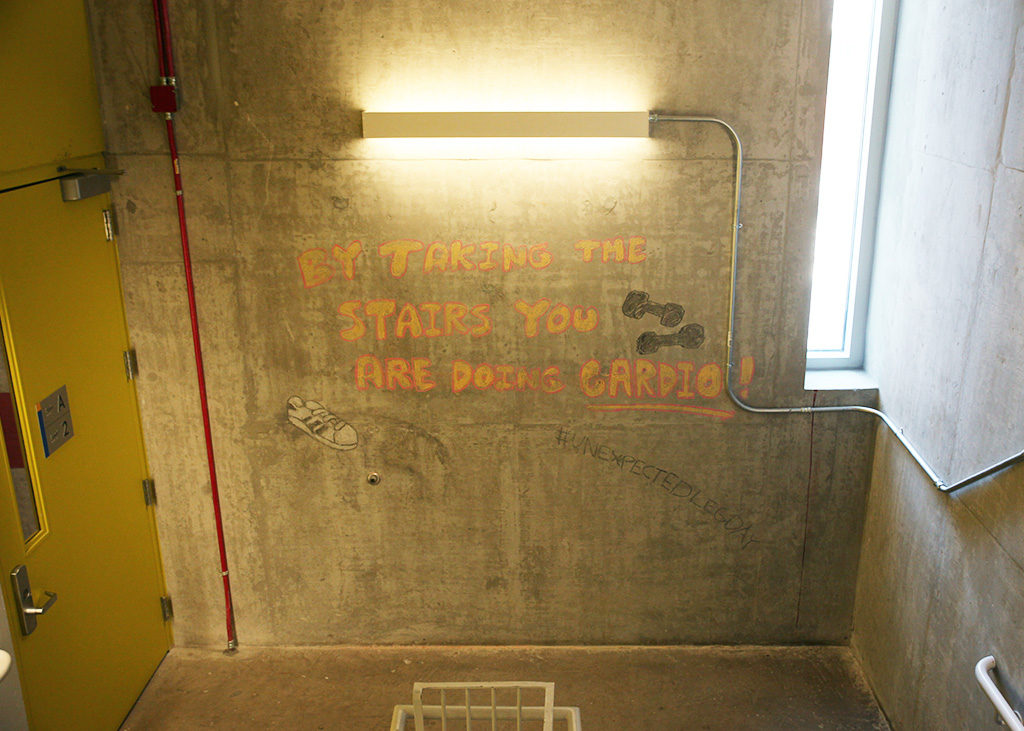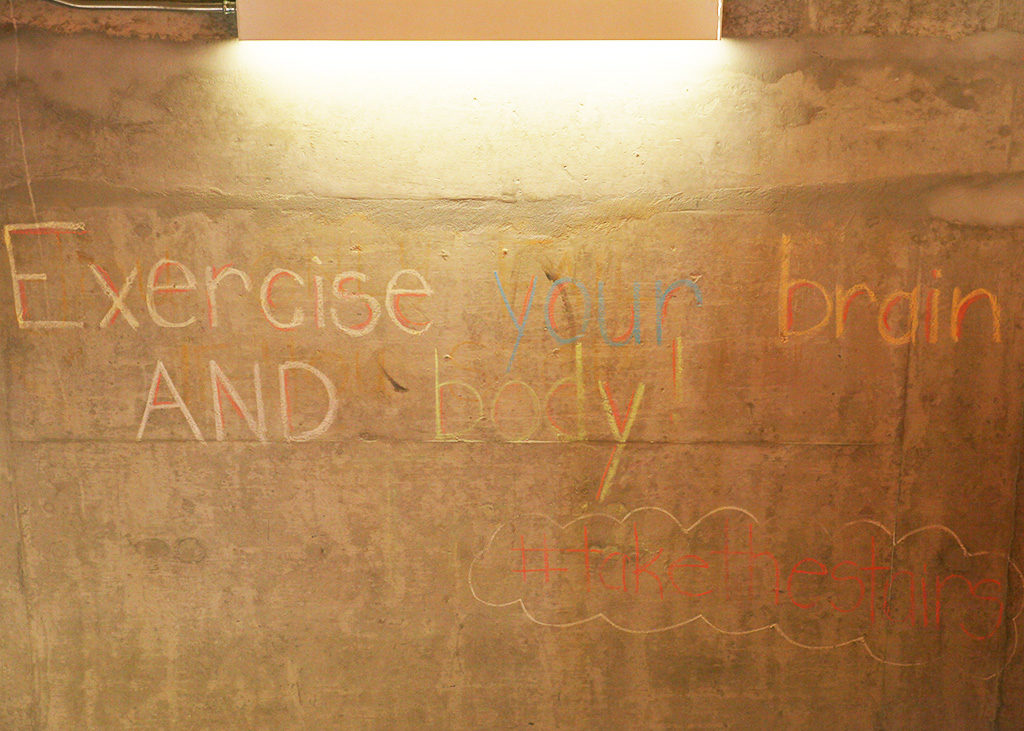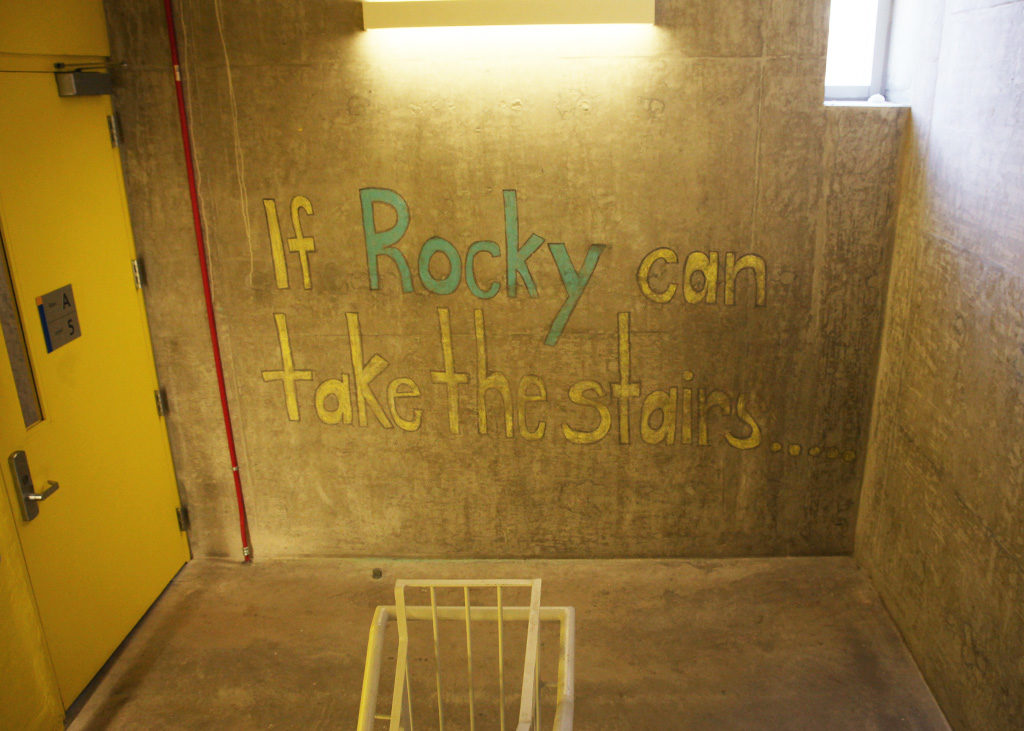Fed up with the elevators in the SLC, Kimberlee Collins walks one of her students with a visual impairment down the stairs. Collins reads aloud to her student the messages written in chalk on the stairwell walls on the west side of the building. One of them shocks her.
“There is no elevator to success, you have to take the stairs.”
Collins took a photo of the drawing and posted it to the Ryerson disabilities studies’ Twitter page, with the hashtag “ableism.”
#Ableism in the stairwell outside the Student Learning Centre. Reads: There is no elevator to success you have to take the stairs. #Ryerson pic.twitter.com/Wpv5sdYx5I
— DS at Ryerson (@DS_Ryerson) September 30, 2016
These chalk drawings are on every landing in both the west and east staircases of the SLC. They are created by the SLC student engagement and leadership (SEAL) team, who are most notably the students in yellow t-shirts.
The messaging is intended to be encouraging and meant to motivate students who can take the stairs to do so, but there are many students who cannot.
And to those students, the statements are hurtful.
“Totally, totally offended by it,” said Mara Howard, a third-year social work student and a RyeACCESS coordinator who identifies with an invisible disability. “I was already having a shitty day, and I was already struggling to go up the stairs, because I couldn’t wait for the elevator, and that’s when I saw it.”
“Totally, totally offended by it,” said Mara Howard. “I was already having a shitty day, and I was already struggling to go up the stairs, because I couldn’t wait for the elevator, and that’s when I saw it.”
Ableism is a set of practices and values that discriminates against people who identify with a developmental, emotional, physical or psychiatric disability, in favour of people who are not disabled. Ableism promotes non-disabled people as “normal” resulting in public and private places and services being built to accommodate non-disabled people.
According to Howard these chalk messages are promoting ableism language. Phrases like the one referred to by Howard are written by the SLC student staff.
“I think all our messaging should always take into consideration all users and be inclusive,” said Susan Machado, building officer at SLC. “So we’ll definitely change them.”
According to Machado the ableist messaging has since been taken down.
“I think, the message that really I have for everyone, is to be very intentional when it comes to inclusion,” said Denise O’Neil Green, assistant vice president, vice provost of Equity, Diversity and Inclusion.
Green explains that often times we use language without considering its connotation and the messages it sends out.
According to Amanda Lin, a fourth-year disability studies student who identifies with both physical and invisible disabilities, people are becoming more aware of ableism language, much like they are of gendered related language at Ryerson. But it is a lot more difficult to point out.
“You know it feels icky when someone says something that doesn’t feel right, but you don’t know what to title it because it is not as easy as to point out as things like racism or bigotry,” said Lin.
Recently the SLC has gone under public scrutiny for its failure to create practical accessible spaces for people with disabilities.
The Toronto Star published an article with the lead image of David Lepofsky, chair of the Accessibility for Ontarians with Disabilities Act (AODA), standing on the SLC “hangout stairs” in the lobby of the building, saying that these stairs exclude people with disabilities from hanging out there.
These statements are just one example of the SLC’s exclusion to people with disabilities, much like the chalk writings on the wall.
“That statement painted on the wall gives the impression that you’re not welcome here and that you’re lazy,” said Michelle Woolfery, a third-year equity and diversity studies student who is blind. “It’s just not a very nice thing to say in general.”
According to Woolfery, this kind of language promotes “stair culture”, which is the idea that if you aren’t taking the stairs, it’s because you lack the motivation to do so.
“From just an esthetics perspective, the first thing that you see when you walk into the SLC is stairs, everywhere,” said Woolfery. “Well that’s not a very inviting atmosphere for someone who can’t use stairs.”
But it’s not all bad.
The SLC SEAL team have been trained to help make the SLC more accessible by assisting those who need help to get on the elevators, as well as asking people to move their bags out of pathways so those with mobility devices can get through. Woolfery says this has been really helpful.
One of the things Woolfery would like to see done is for the SLC to develop a formal system for students who identify with a disability to voice their accessibility concerns.
Kajan Vigneswaran is a fourth-year business management student and RyeACCESS coordinator, who uses an electric wheelchair. He and Woolfery were two people in a student engagement working group that were consulted on accessibility issues in the SLC.
But Woolfery hopes that this type of communication continues beyond this project.
“I just wish they (the SLC) would start that process and continue to listen to the feedback that they are getting,” said Woolfery.


